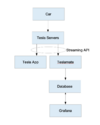Let me guess - running TeslaMate on a Raspberry Pi on Debian Buster?Hi guys, I updated to the new version today on my pi, and reallized that my Grafana was set to the default password, and fixed that. Glad to close it up. But, now that it is updated I can no longer get the the status screen that I normally can via http://192.168.1.9:4000/, where I can go to settings and confirm the version number running. Does this update change that somehow?
If so, you need to either backport libseccomp2 from backports (Instructions) or upgrade from Buster to Bullseye (How To Upgrade Raspberry Pi OS to Bullseye from Buster)
The former is the easy and safer way to go. The latter - you're almost better off backing up, reinstalling and restoring from backup depending on how much customization you've done to your Pi.



